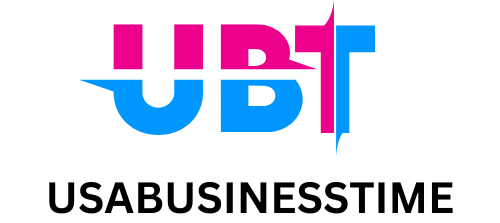Certidor has reshaped the way organizations manage and verify credentials, making it a valuable tool across industries. This platform blends security with flexibility, offering digital badges, customizable profiles, and seamless integration with widely-used networks like LinkedIn. Its impact is clear in fields from education to finance, where efficiency and credibility are paramount.
Key Features and Functionality
Table of Contents
Certidor stands out by offering a range of capabilities that make it adaptable to different user needs, from individual professionals to large organizations. Each feature is designed to enhance trust, streamline processes, and provide flexibility.
1. Verified Credentials
Certidor’s core function is to verify credentials, ensuring authenticity and reducing the risk of fraud. Through secure digital verification, credentials are validated in real-time, giving users confidence that the information shared is genuine. This feature is particularly valuable in industries where trust is paramount, such as finance, education, and healthcare.
2. Customizable Profiles
Certidor allows users to personalize their profiles with specific skills, achievements, and other professional attributes. Customization helps individuals and organizations present relevant details tailored to their audience. For businesses, this flexibility extends to teams and departments, enabling clear representation of roles, qualifications, and responsibilities.
3. Digital Badges
Digital badges provide a visual representation of achievements and skills, making it easy to showcase accomplishments across platforms. Certidor’s badges are compatible with multiple digital environments and can be shared across social media, websites, and digital portfolios. This visual feature supports professionals in building a credible digital footprint.
4. Secure Sharing Options
Certidor offers multiple ways to share credentials securely. This includes direct sharing with potential employers, partners, or on social media while maintaining data privacy. Users can control access to their profiles, ensuring that sensitive information is shared only with authorized parties. This security focus is particularly appealing in fields requiring strict confidentiality.
5. Integration with Professional Networks
Certidor is designed to integrate smoothly with widely used platforms like LinkedIn, allowing users to display verified achievements directly on their profiles. This feature not only builds credibility but also enhances networking potential, connecting users with peers, recruiters, and potential clients in an authentic way.
Each of these features contributes to Certidor’s versatility, allowing it to serve as both a professional tool and a resource for organizational credibility.
Applications Across Industries
Certidor’s versatility allows it to serve a wide array of sectors, addressing industry-specific needs with tools that enhance productivity, security, and credibility. Here’s how Certidor is making a difference across major fields:

1. Business and Corporate Environments
In business settings, Certidor streamlines employee credentialing, helping organizations verify skills, qualifications, and certifications effortlessly. This is particularly valuable in recruitment, where authenticated credentials can save time and reduce hiring risks. Additionally, Certidor supports compliance management, enabling businesses to track and validate necessary certifications across teams. This feature enhances transparency and builds trust with stakeholders by showcasing verified skills and competencies.
2. Technology and Software Development
Within the technology sector, Certidor is valued for its adaptability to evolving digital landscapes. Many tech companies use Certidor to verify technical skills and certifications, which are often updated and need continual verification. By integrating seamlessly with project management tools and digital profiles, Certidor ensures that teams display up-to-date competencies, supporting efficient task allocation and teamwork in dynamic projects.
3. Education and Academic Institutions
Certidor plays an integral role in education by allowing institutions to issue verifiable digital badges and certificates for completed courses, workshops, or other educational achievements. Students and professionals can then share these achievements on various platforms, enhancing their employability and networking potential. Academic institutions benefit from this feature by reducing fraudulent claims and boosting their reputation through recognized, verifiable credentials.
4. Finance and Accounting
The finance industry requires stringent accuracy and security in credentialing. Certidor assists firms by validating certifications in compliance, auditing, and risk management, areas where trustworthiness is paramount. By providing a secure framework for sharing qualifications with clients and regulatory bodies, Certidor helps finance professionals maintain credibility while meeting industry standards for transparency and accuracy.
5. Healthcare and Medical Fields
Certidor’s secure credentialing is crucial in healthcare, where medical professionals must regularly update and verify their qualifications. Certidor supports this by allowing easy, verifiable proof of credentials, reducing the administrative burden on HR departments. Medical institutions can also share authenticated certifications with patients or regulatory bodies, enhancing trust and supporting compliance with health regulations.
6. Government and Public Services
Public sector organizations benefit from Certidor’s ability to verify the qualifications of employees, contractors, and service providers. In fields like public safety, education, and government administration, trust and accountability are essential. Certidor simplifies the process of ensuring that all personnel meet required standards, contributing to more efficient and transparent public service delivery.
Certidor’s presence across these industries highlights its adaptability to diverse needs. By providing reliable, secure credentialing, it meets the unique requirements of each field, strengthening professional relationships and improving efficiency across sectors.
Technological Innovations and Future Trends
Certidor continues to evolve with advancements that keep it relevant and valuable in fast-paced digital environments. These innovations improve its functionality, security, and adaptability, making it a future-ready tool across diverse industries.
1. Artificial Intelligence (AI) for Smart Credentialing
Certidor incorporates AI to enhance its credentialing capabilities. By using AI to verify credentials, Certidor minimizes human error and improves the speed of validation. AI-powered algorithms also assist in identifying patterns of fraudulent credentials, adding a layer of security that helps organizations maintain credibility. As AI advances, Certidor is expected to expand its smart credentialing features, further increasing accuracy and reducing risks.
2. Enhanced Automation for Seamless Integration
Automation within Certidor streamlines tasks that were previously manual, such as updating qualifications, issuing reminders for renewals, and tracking changes in credential status. With automated workflows, Certidor provides users with real-time updates, enhancing productivity. The platform’s focus on automation makes it adaptable to different systems, allowing it to integrate effortlessly with tools used in HR, compliance, and project management.
3. Blockchain-Based Security Enhancements
Certidor is exploring blockchain technology to add an extra layer of transparency and security. Blockchain offers a decentralized way of storing credential data, making it nearly tamper-proof. This is especially valuable in sectors like finance and healthcare, where data integrity is non-negotiable. By using blockchain, Certidor aims to secure data sharing while keeping information transparent and traceable, enhancing user confidence in credential authenticity.
4. Integration with Data Analytics Tools for Insightful Reporting
Certidor’s integration with data analytics tools provides organizations with insights into credential usage, trends, and compliance gaps. This feature helps managers make informed decisions by analyzing credential-related data at individual, team, and organizational levels. For instance, analytics can highlight departments with high credential expiration rates, allowing proactive management of re-certification. As businesses rely more on data, Certidor’s analytics capabilities are expected to grow, supporting data-driven decision-making.
5. Increased Focus on Interoperability Across Platforms
Certidor is committed to being compatible with various software ecosystems, including HR platforms, learning management systems, and networking sites. This focus on interoperability enables seamless data exchange and reduces the need for manual data input. Organizations benefit from smoother workflows and more accurate credential data across different platforms, making Certidor a versatile tool within interconnected work environments.
6. AI-Powered Personalization for User Experience
With AI advancements, Certidor is developing ways to tailor the user experience by learning from individual preferences and usage patterns. For example, Certidor could recommend relevant credentials based on a user’s role, industry, or career aspirations. This personalization enhances user satisfaction, as the platform becomes more intuitive and aligned with each user’s professional goals.
7. Emerging Trends in Credential Standardization
The industry trend toward credential standardization aligns with Certidor’s mission of providing universally recognized and trusted credentials. Certidor is actively working with global bodies to adopt standards that make credentials more portable and universally accepted. Standardization supports professionals in proving their qualifications across borders, expanding job mobility and recognition of skills worldwide.
8. Predictive Technology for Future Credential Needs
Certidor is beginning to incorporate predictive technologies that forecast future credential needs based on industry trends. For instance, as cybersecurity skills become more critical, Certidor may highlight emerging certifications in that area. This feature keeps users informed about valuable credentials, helping them stay competitive in a constantly evolving job market.
With these technological innovations, Certidor is setting a foundation for sustained growth and relevance. As it integrates emerging technologies, the platform is not only adapting to current demands but also anticipating future industry needs. This forward-thinking approach keeps Certidor ahead in a market where credentialing security and adaptability are key.
Impact on Business Operations and Efficiency
Certidor provides tangible improvements for businesses by enhancing operations and streamlining efficiency. Its range of features contributes directly to productivity, cost savings, and improved management across departments. Here’s how Certidor supports key areas in business operations:
1. Productivity Boost Through Credential Automation
Certidor automates many credential management tasks, such as tracking expiration dates, sending renewal reminders, and updating certifications. This automation frees HR and compliance teams from manual monitoring, allowing them to focus on more strategic initiatives. By reducing time spent on administrative tasks, Certidor contributes to increased productivity across departments.
2. Improved Compliance and Reduced Risk
Industries with strict regulatory requirements, such as finance and healthcare, benefit from Certidor’s compliance tracking features. Certidor ensures that employees maintain current certifications and licenses, which is essential for meeting industry standards. Automated alerts help organizations avoid potential fines or disruptions due to non-compliance, reducing legal and operational risks.
3. Streamlined Onboarding and Training
Certidor enhances onboarding by simplifying the verification of employee credentials. New hires can present their qualifications digitally, expediting the onboarding process and minimizing paperwork. Certidor also supports continuous training by tracking ongoing certifications and offering reminders for additional coursework or re-certifications, helping businesses build and retain a well-qualified workforce.
4. Cost-Effectiveness Through Efficient Resource Allocation
By providing a clear overview of team certifications and skills, Certidor allows managers to allocate resources effectively. For instance, with quick access to updated credential data, managers can assign tasks to team members with the right skills, reducing the need for external hiring or training. This targeted approach to resource allocation can lead to cost savings and improve project timelines.
5. Enhanced Transparency with Clients and Stakeholders
Certidor adds value to client and stakeholder relationships by allowing businesses to showcase verified team qualifications. For example, consulting firms or specialized agencies can provide clients with proof of credentials to demonstrate their expertise and build trust. This transparency strengthens business credibility, helping to attract and retain clients who prioritize expertise and reliability.
6. Efficient Document Management and Data Security
Certidor supports secure storage and access to credential records, reducing the need for physical document storage. By consolidating credential records digitally, Certidor helps businesses manage documents in a more organized and accessible manner. This digital approach also enhances data security, as sensitive information is protected through encryption and secure sharing options, aligning with industry data protection standards.
7. Data-Driven Decision Making Through Credential Analytics
Certidor’s analytics features allow businesses to track credential trends and skill gaps within teams, supporting strategic decision-making. For instance, by identifying areas where re-certifications are frequently required, managers can predict upcoming training needs and budget for them in advance. These insights enable businesses to plan proactively, improving overall efficiency and workforce readiness.
8. Strengthened Employee Engagement and Development
Certidor’s emphasis on verified skills and ongoing certifications encourages employees to invest in their professional growth. When employees see that their skills are formally recognized and valued, they’re more likely to engage in additional training and skill development. This supports a culture of learning and career advancement, contributing to higher employee satisfaction and retention.
Certidor’s impact on business operations and efficiency highlights its role as a strategic tool that supports sustainable growth. Through automation, improved compliance, and enhanced transparency, Certidor helps businesses optimize resources, minimize risks, and maintain a competitive edge.
Certidor Implementation Guide
Implementing Certidor successfully requires a structured approach to make the most of its features and ensure smooth integration within existing systems. This guide outlines each step involved in setting up Certidor, from initial setup to overcoming common challenges.

1. Define Clear Objectives and Identify Key Users
Before implementation, outline specific objectives that Certidor will help achieve. These could include streamlining credential verification, improving compliance, or enhancing document security. Identify the departments and key users who will actively use Certidor. Typical users include HR teams, compliance officers, and department managers who regularly handle credentialing tasks.
2. Initial Setup and User Account Creation
Once goals are defined, begin by setting up user accounts within Certidor. This involves creating admin accounts for primary users who will manage the system and individual accounts for employees. Certidor offers options for different permission levels, so assign roles based on each user’s responsibilities. Admins can oversee settings, while other users can access and update their credentials.
3. Customize the Dashboard and Interface
Certidor provides customization options that allow organizations to tailor the platform’s dashboard to match their workflows. Adjust the interface to display key metrics, recent updates, and credential statuses at a glance. A well-organized dashboard helps users monitor progress, track pending tasks, and quickly access the most relevant features.
4. Integration with Existing Systems
Certidor supports integration with a variety of platforms, including HR, payroll, and project management tools. This step involves connecting Certidor to these systems to enable data synchronization and streamline processes. For example, syncing with an HR system allows automatic updates to employee profiles when certifications are added or renewed. This integration reduces redundancy and improves data accuracy.
5. Data Import and Credential Upload
After setting up the system, begin uploading existing credential data into Certidor. Certidor’s bulk upload feature allows for efficient importing of large volumes of data, making it easier to get started with a comprehensive database. This step may include uploading copies of certifications, transcripts, or other documents that verify qualifications.
6. Set Up Automated Notifications and Reminders
Certidor’s notification feature allows users to set automated alerts for credential expirations, upcoming renewals, or new training requirements. These notifications help both employees and managers stay informed without manual tracking. Automated reminders reduce the chance of missed renewals, supporting better compliance and readiness across the organization.
7. Train Users on Key Features and Best Practices
Providing training for users is essential for effective adoption. Focus on Certidor’s core features, such as credential verification, automated reminders, and document management. Demonstrate how to access and update information, set notifications, and view credential analytics. Regular training sessions, especially during the initial phase, can improve user confidence and minimize support queries.
8. Monitor Usage and Gather Feedback
During the initial implementation phase, monitor how Certidor is being used across the organization. Encourage users to provide feedback on any issues, additional needs, or areas of improvement. Certidor’s analytics can also provide insights into usage trends and areas where support may be required. This feedback loop allows for ongoing adjustments to improve usability and align with user needs.
9. Address Common Challenges and Offer Support
Like any new tool, Certidor may present some challenges in the early stages. Some users may find the interface unfamiliar, while others may need guidance on best practices. Establishing a dedicated support team or assigning Certidor champions within each department can ease this transition. These champions can act as go-to resources, helping others troubleshoot issues and optimize their use of the platform.
10. Regularly Update and Maintain the System
Certidor requires regular updates to maintain its functionality and security. Schedule periodic reviews of user roles, document accuracy, and credential statuses. This proactive approach ensures the platform remains up-to-date and that user data is reliable. Staying informed about new features and upgrades from Certidor also helps the organization leverage any additional tools as they become available.
Following this step-by-step approach to Certidor’s implementation can help organizations integrate the platform efficiently while maximizing its benefits. By focusing on structured onboarding, continuous support, and regular maintenance, Certidor can become a valuable asset in managing credentials effectively and securely.
Comparative Analysis and Key Differentiators
Certidor distinguishes itself from other credential management platforms by combining ease of use with a robust set of features designed for various professional needs. Here’s a closer look at how Certidor compares with similar solutions and what sets it apart:
1. User-Friendliness and Interface Design
Certidor’s interface is designed to be straightforward, allowing users to access features without a steep learning curve. Compared to other platforms that may prioritize functionality over ease of use, Certidor achieves a balance by offering powerful tools in a format that doesn’t overwhelm new users. This focus on usability increases adoption rates across organizations and minimizes the need for intensive training.
2. Customization Capabilities
While many credentialing solutions provide standard features, Certidor offers significant customization options that cater to different industries and business needs. Users can personalize dashboards, set unique workflows, and create role-specific access levels. This flexibility is particularly valuable for organizations with specific compliance requirements, as Certidor can be tailored to support industry regulations while remaining adaptable to unique business processes.
3. Integration Flexibility
Certidor stands out with its ability to integrate with a wide range of tools, from HR software to project management and professional networking platforms like LinkedIn. Other solutions may have limited compatibility or require extensive configuration to work with existing systems. Certidor’s seamless integrations mean businesses can consolidate their credentialing processes without disrupting their established workflows, creating a smooth flow of information across platforms.
4. Security and Data Privacy
Security is a central feature for Certidor, especially for industries handling sensitive information. Certidor employs advanced encryption and secure sharing options to protect user data, meeting strict data protection standards across sectors. Unlike some credential management solutions that focus primarily on functionality, Certidor places equal emphasis on security, making it a reliable choice for fields like finance, healthcare, and government where privacy is paramount.
5. Scalability for Diverse Business Sizes
Certidor caters to organizations of all sizes, from startups to large enterprises. Its flexible pricing and functionality allow smaller companies to adopt the platform without overwhelming costs, while larger organizations benefit from Certidor’s capacity to handle extensive credential data and multiple teams. This scalability provides organizations with a tool that grows with them, reducing the need for future platform migrations as the business expands.
6. Analytics and Reporting Tools
Certidor offers analytics that go beyond basic reporting, providing actionable insights into credential trends, compliance levels, and renewal rates. Other platforms may offer reporting as an add-on or in a limited format, whereas Certidor’s in-depth analytics are integrated within the main system. This feature supports data-driven decisions, helping managers identify areas for improvement and predict future needs based on credential data.
7. Cost-Effectiveness Compared to Alternative Solutions
While pricing varies across credential management platforms, Certidor is often considered cost-effective due to its extensive features at competitive pricing levels. By offering customization, integration, and advanced security within one platform, Certidor can reduce the need for multiple separate tools, providing savings in both time and cost for organizations. Businesses can achieve a full suite of credentialing capabilities without investing in additional resources or software.
8. Continuous Innovation and Feature Updates
Certidor demonstrates a commitment to innovation by frequently updating its platform with new features and improvements. This proactive approach to development ensures that Certidor remains aligned with the latest industry trends and technologies, such as AI-driven credential analysis and blockchain security enhancements. By maintaining a pace of regular updates, Certidor keeps users equipped with tools that match changing professional needs, setting it apart from solutions that may not evolve as rapidly.
9. Support and Community Resources
Certidor offers dedicated support and a growing community of users who share best practices, troubleshoot common issues, and exchange ideas. This network is valuable for both new and experienced users, fostering a sense of community and providing quick solutions to questions. Some other platforms may offer limited support, making Certidor’s emphasis on accessible support and community engagement an appealing aspect for organizations looking to implement credentialing efficiently.
Certidor’s key differentiators make it a versatile, secure, and user-friendly choice for credential management. Its blend of customization, integration, security, and ongoing innovation supports businesses in achieving credentialing accuracy, efficiency, and compliance in a competitive landscape.
Case Studies and Real-World Success Stories
Certidor’s impact extends across multiple industries, with real-world applications that showcase its value in improving efficiency, compliance, and security. The following case studies highlight how various organizations have successfully integrated Certidor to meet their unique credentialing needs:
1. E-Commerce Business: Enhancing Trust and Compliance
An e-commerce company specializing in third-party logistics needed a way to manage and verify the credentials of their contractors and suppliers. Due to the complex nature of the supply chain, managing certifications for drivers, warehouse staff, and delivery partners was challenging. After implementing Certidor, the company created a centralized database to store and verify credentials, ensuring that all contractors met compliance standards.
Certidor’s automated reminders also helped streamline the re-certification process, reducing the risk of lapses that could affect operations. The company reported an improvement in compliance rates and a reduction in administrative costs, which previously included extensive manual checks. By using Certidor, the e-commerce business established a secure, reliable system for verifying credentials, which enhanced its reputation and customer trust.
2. Financial Services Firm: Reducing Risk and Enhancing Security
A financial services firm needed a secure method to verify employee qualifications and manage industry-required certifications across multiple teams. Given the sensitive nature of financial data, maintaining a high level of credential security was critical. Certidor provided a secure credentialing platform that integrated directly with the firm’s HR system, allowing seamless updates and access to credential data.
Through Certidor, the firm set up encrypted document storage, secure sharing options, and automated alerts for certifications requiring renewal. This setup not only improved the firm’s security protocols but also helped avoid potential fines and legal risks related to non-compliance. By integrating Certidor, the financial firm reduced credential management time by 30% and minimized risks associated with outdated certifications, which contributed to better regulatory compliance.
3. Educational Institution: Digital Badges for Career-Ready Students
A technical college sought a solution to digitally recognize and showcase the skills of graduating students in a way that would appeal to employers. Certidor’s digital badge feature allowed the institution to create visually engaging, verifiable badges that students could share on their professional profiles. These badges represented specific skills, such as software programming, project management, and cybersecurity.
Certidor enabled the college to issue verified credentials instantly upon course completion, giving students a competitive edge in the job market. With Certidor’s LinkedIn integration, students could easily add their achievements to their profiles, increasing visibility with potential employers. This initiative resulted in positive feedback from students, with many expressing that the badges made them stand out in a competitive hiring landscape. The institution observed a higher rate of job placements and strengthened its relationship with hiring partners.
4. Healthcare Provider: Simplifying Credentialing for Compliance and Quality Control
A large healthcare provider faced challenges with credential management across its network of medical professionals. Keeping track of certifications, renewals, and compliance standards was difficult, especially given the high turnover in certain positions. Certidor’s automated credential tracking system allowed the provider to manage credentials more efficiently, ensuring that all medical staff maintained their required qualifications.
Certidor’s system generated reminders for upcoming expirations, minimizing the risk of expired credentials that could impact patient safety and regulatory compliance. The healthcare provider also used Certidor’s reporting features to monitor compliance across departments, allowing them to quickly address any gaps. This improvement in credential management not only reduced administrative burdens but also improved quality control, supporting the provider’s commitment to high standards in patient care.
5. Marketing Agency: Enhancing Team Credibility for Client Projects
A digital marketing agency wanted a way to highlight the expertise of its team members for client projects. Certidor’s customizable profiles allowed the agency to display team credentials and certifications, such as social media marketing, data analytics, and content strategy, in a verifiable format that clients could trust.
By showcasing each team member’s verified skills, the agency enhanced its credibility with clients, contributing to stronger client relationships and improved project outcomes. Clients appreciated the transparency, knowing that their campaigns were managed by professionals with proven expertise. Certidor’s solution helped the agency stand out in a competitive market, resulting in higher client retention and new business opportunities.
User Experience, Support, and Community Resources
Certidor prioritizes user experience by offering a well-designed interface, robust support options, and a strong community network that enhances learning and problem-solving. These resources make Certidor accessible for new users while empowering experienced users with advanced tools and insights.

1. Intuitive User Interface
Certidor’s interface is designed with simplicity and efficiency in mind, allowing users to access core features quickly. The dashboard provides a clear overview of important metrics like credential statuses, pending renewals, and recent updates. Each function is labeled clearly, with easy access to customization settings, credential uploads, and reports. This structure supports efficient task completion and minimizes the time needed to learn new processes, making Certidor ideal for users with varying levels of technical expertise.
2. Comprehensive Documentation and Tutorials
To support users in making the most of its features, Certidor provides detailed documentation and video tutorials covering a wide range of topics, from basic setup to advanced analytics. New users can access step-by-step guides that explain essential functions, while more experienced users can explore advanced capabilities like integrations and data reporting. This extensive resource library reduces the need for direct support, giving users the tools they need to solve issues independently.
3. Dedicated Customer Support
Certidor offers responsive customer support to help users with any technical or operational challenges. Users can reach support through multiple channels, including email, phone, and live chat, with response times that align with the urgency of each request. The support team is knowledgeable about various industries and can offer targeted guidance for specific credentialing requirements. This level of service builds user confidence, helping organizations implement Certidor effectively.
4. Active Community Forums and User Groups
Certidor’s community resources include active forums and user groups where users can connect, share experiences, and troubleshoot common issues. These forums foster a collaborative environment, where users contribute tips, solve problems, and discuss best practices. Community members can gain insights from peers who have faced similar challenges, creating a valuable exchange of knowledge. This community support enhances the user experience by offering real-world advice that complements official documentation.
5. Webinars and Workshops for Skill Development
Certidor regularly hosts webinars and workshops that provide users with deeper insights into the platform’s features and industry best practices. These sessions cover topics like integrating Certidor with other platforms, using analytics to improve compliance, and setting up automated workflows. Led by Certidor experts and occasionally featuring guest speakers from various industries, these sessions allow users to enhance their skills and stay updated on new features.
6. Feedback Channels for Continuous Improvement
Certidor values user feedback and offers multiple channels for users to submit suggestions or report issues. This feedback loop informs Certidor’s ongoing development and helps the platform align with user needs. By actively incorporating user insights, Certidor continually enhances its functionality, ensuring it remains relevant and responsive to the evolving requirements of credential management.
7. Knowledge Base with FAQs and Common Solutions
Certidor’s knowledge base is a convenient resource for users seeking quick solutions to common problems. It includes an extensive FAQ section, troubleshooting guides, and examples of common workflows, making it easy for users to find answers without needing direct support. This resource saves time and empowers users to solve minor issues independently, keeping their workflow uninterrupted.
8. Advanced User Training and Certifications
For users interested in mastering Certidor, the platform offers advanced training and certification programs. These programs cover in-depth topics like data analytics, customization, and integration setup. Participants who complete this training receive certification that demonstrates their expertise with Certidor, which can be a valuable asset for organizations looking to implement or expand the platform effectively.
Certidor’s approach to user support, combined with a proactive community and multiple learning resources, creates a positive experience that meets both individual and organizational needs. This ecosystem of support, education, and feedback ensures that Certidor users are equipped to handle credential management with confidence and efficiency.
Conclusion
Certidor has proven itself as a robust and adaptable solution for credential management across diverse industries. From enhancing compliance and security to supporting transparency and trust, Certidor brings tangible value to organizations and individuals alike. Its innovative features, such as AI-driven credentialing, blockchain security, and seamless integration options, position it as a forward-thinking tool that aligns with the evolving needs of today’s workforce. The platform’s commitment to user experience, backed by comprehensive support and active community resources, allows users to confidently manage credentials with precision and efficiency. As organizations continue to prioritize secure and reliable credentialing, Certidor stands ready to support their goals with tools that enhance productivity, trust, and operational excellence.











